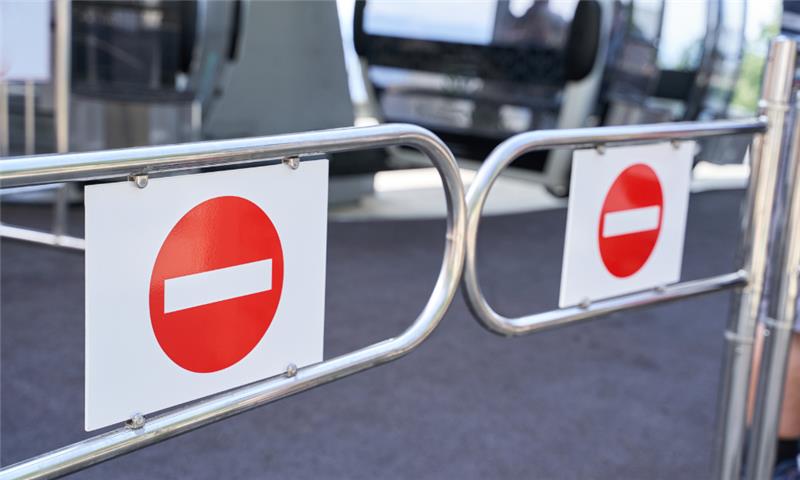Contingency fee is one mode of paying a lawyer; Credits: Flaticons – stock.adobe.com
One of the social responsibilities of a lawyer is to accept a client, even if they lack the hard cold cash to pay them. However, it is undeniable that lawyers also have bills to pay. To meet halfway, the lawyer and the client can agree on a contingency fee agreement.
Here, we’ll discuss the basic legal considerations when using this type of fee arrangement. This article can be used by lawyers and potential clients who want to explore using this type of fee arrangement.
What are contingency fees in Canada?
A contingency fee is one of the ways of paying legal fees. Here, the lawyer will only be paid if they win the case, and the client actually receives the compensation they’re asking for.
“Contingency fee agreements refer to retainer agreements between lawyers and their clients,” says Michael Connolly, an Associate Lawyer at Boland Romaine LLP. “Not all lawyers accept contingency fee agreements; however, they are very common in personal injury litigation.”
From the start of the engagement and until the award is acquired, the client does not have to pay anything in advance. The lawyer will only be paid out of the money the client receives and/or a separate lawyer’s fees.
This arrangement is usually used in personal injury cases. Because they’re still recovering and even unable to work, injured plaintiffs in these cases would have limited resources. However, with contingency fees, they can still pursue their case, even if they don’t have money upfront to pay a personal injury lawyer.
Watch this video which explains more what a contingency fee is:
Need a lawyer to help you with your personal injury case? Talk to one of the best personal injury lawyers in Canada as ranked by Lexpert.
Regulations on contingency fees
The different provincial and territorial law societies in Canada govern how contingency fees should be charged by lawyers. This is part of their role as the professional regulators of lawyers in the country.
In sum, rules about contingency fees are found in:
- rules and codes of conduct by the law societies
- the province’s or territory’s rules of court
- other statutes in each province and territory
As such, rules on the calculation, validity, and enforceability of contingency fees will differ in every province and territory.
Being the regulatory bodies of lawyers, law societies can also receive complaints based on a lawyer-client relationship, including billings and fees. This is aside from the remedy of going to court, which both lawyers and clients can do.
Precedents on contingency fees
According to Connolly, the laws around contingency fee agreements vary from province to province. He highlights the following examples for Ontario:
-
Ontario’s the Solicitors Act, R.S.O. 1990, c S.15: The piece of legislation that sets out the parameters and requirements for a contingency fee agreement. There is also a regulation to the Solicitors Act, called Contingency Fee Agreements, O. Reg 563/20, which requires that all contingency fee agreements in Ontario be in a prescribed form set out by the Law Society of Ontario.
-
Law Society of Ontario’s Rules: Lawyers cannot deviate from the standardized contingency fee agreement set out by the Law Society of Ontario without obtaining approval from a judge. The standardized contingency fee agreement can be found on the Law Society of Ontario’s website. Although the wording and terms of the contingency fee agreement are standardized, the percentage a lawyer can charge is not. That is something the clients and lawyers can negotiate amongst themselves. However, the Ontario regulations generally prohibit a lawyer from recovering more in fees under a contingency fee agreement than the client recovers from their settlement or award.
Other modes of legal fees in Canada
Contingency basis is just one of the many ways that a lawyer is paid. This will depend on the type of case they’re handling, the resources of their clients, and other practical considerations.
Aside from contingency fees, below are the other fees arrangements in Canada:
-
Hourly fees: The basis of calculating a lawyer’s fee is the specific hours that the lawyer rendered for the legal matter (called billable hours), multiplied with the hourly rate of the lawyer. Billable hours would include everything, from consultations, research, preparing legal documents, etc. A lawyer’s hourly rate would depend on their expertise on the matter, among other factors.
-
Fixed fees: At the start of the lawyer-client relationship, both parties will agree to a fixed fee for the completion of the specific legal matter. The fee can be based on a tariff suggested by a lawyer or on the agreement of the parties. This is also called flat fees, where there’s a corresponding amount for a lawyer’s set of legal services.
-
Limited retainers: A limited retainer is drawn up to cover only a part of the legal services needed by the client. This depends on the needs and resources of the client (e.g. client cannot afford to pay for continuing legal representation). Law societies require parties to strictly execute a limited retainer for this.
Lawyers and clients are not prohibited from doing a blended version of these billing arrangements. An example is an arrangement for hourly fees plus contingency fees.
Here’s a video which explains more about the difference between a contingency fee arrangement and the hourly rate:
Check out our directory of the best personal injury law firms in Canada as ranked by Lexpert if you’re looking for law firms that offer contingency fees arrangements.
How do contingency fees work in Canada?
Connolly says that “a lawyer’s fees under a contingency fee agreement are based on a percentage of what the lawyer recovers for the client, collected after a settlement or trial verdict.”
This is unlike a standard retainer agreement, he adds. “In [standard retainer agreements], clients must pay for legal services either by paying the lawyer their hourly rate or in block installments. It is sometimes paid upfront and drawn down by the lawyer incrementally as work is performed.”
In a contingency basis, a lawyer’s legal fees will only be paid:
- at the end of the case (i.e. when the court or tribunal renders the decision)
- if the client won the case, where they’ll be receiving the amounts they prayed for
Thus, payments are deferred until these two requirements are met. However, a lawyer may still recover administrative costs and other expenses even if the case is lost.
Also, this arrangement applies whether the compensation is awarded by the court, or an out-of-court settlement is agreed upon by the parties in the case.
To prevent any dispute after the case has been decided, both the lawyer and the client should agree and understand every detail of the arrangement.
Requisites of a contingency fee agreement
The rules of court and laws of each province and territory have specific requirements so that a contingency fee agreement is valid and enforceable. Commonly, the agreement must be:
- in writing
- signed by the lawyer and the client
- must be witnessed and signed by the witness (in some provinces)
- approved by the court (in some provinces)
Specific terms to be included in a contingency fee agreement
Some provincial rules of court provide for the specific terms that the fee agreement should have. For instance, to become enforceable, the Alberta Rules of Court provides that a contingency fee agreement must contain the following terms:
- name and address of the lawyer and client
- nature of the claim
- event or contingency to be paid
- manner of calculating the fee
- maximum fee payable
- whether the client will pay disbursements and other charges
- terms if the lawyer will receive any amount from the costs award
- termination of the agreement
- terms on reviewing the agreement
These terms are also used by some provinces, which govern the enforceability of a contingency fee agreement.
Court approval or review of fee agreements
Some provinces require that after a contingency fee agreement is reached, it must be approved by the court to be valid. Examples are the rules of the Law Society of British Columbia (LSBC) and Law Society of New Brunswick (LSNB), which require that the agreement be approved and reviewed if its terms are different to the prescribed form.
Prescribed form of contingency fee agreements
While a fee agreement can generally be in any form, most law societies have their prescribed form, which lawyers must follow. Under Ontario’s Solicitors Act, a new regulation was adopted that now requires all lawyers to use its Standard Form Contingency Fee Agreement.
When contingency fees can be used
Paying a lawyer on a contingency basis cannot be used for all types of cases. Law societies limit the use of this fee arrangement to cases where the client may receive any form of compensation or award. This includes:
- personal injury cases
- other torts cases (e.g. medical malpractice)
- labour and employment cases
When contingency fees are prohibited
On the other hand, law societies prohibit the paying of a lawyer’s fees using this arrangement in the following matters:
- family law cases (e.g. divorce and separation)
- criminal and quasi-criminal matters (e.g. when filing or defending a criminal case)
How are contingency fees calculated?
Law societies do not give a fixed calculation of contingency fees. This gives the parties more liberty to agree on how much the lawyer should receive in such a case, but with certain legal limits.
“Under a contingency fee agreement, the lawyer’s fee is based on a percentage of what that lawyer recovers for the client,” Connolly says. “The percentage varies and can increase the further a claim is advanced.”
As practiced and as allowed by the rules, below are the usual arrangements in a contingency fee agreement:
- a particular percentage of the amount recovered by the client will be given to the lawyer; and/or
- some of the costs awarded to the client, which is part of a settlement or award, will be paid to the lawyer; and/or
- disbursements, administrative costs, and/or taxes that the lawyer spent for the client will be paid by the client, whether the case is won or not
The basic rule is that the fees or percentage must be fair and reasonable, willingly agreed to by the client, and be disclosed to the client as early as possible.
Maximum limits
Other law societies provide for a maximum amount that contingency fees can be charged in a winning litigant’s award. For instance, the LSBC’s rules provide for the following maximum limits, subject to the court’s approval:
-
33 1/3% of the amount recovered: for claims for personal injury or wrongful death in motor vehicle accidents
-
40% of the amount recovered: for any other claims for personal injury or wrongful death
Read next: Wrongful death lawyers: who they are and what they do
Structure of contingency fees
Still subject to the agreement of the parties and if allowed by the rules, a contingency fee can be structured in many ways. First, parties will have to agree on the percentage of the award or settlement to be paid to the lawyer. Next, parties will decide on the structure on how this percentage shall be applied.
Below are some suggestions on the fees’ structure from the Law Society of Ontario (LSO):
-
fixed: the percentage that the lawyer will receive is fixed throughout the legal matter, until it’s resolved, or an award is rendered
-
staged or graduated: the percentage that the lawyer will receive changes; if the legal matter is resolved at an early stage, the percentage is lower, and vice versa
-
partial: the client initially pays for some legal services, plus a contingency fee at a lower percentage if the client settles or is successful at trial
-
bonus or premium: in addition to legal fees, the lawyer is paid a bonus, premium, or other amount if the matter is resolved positively
What are the benefits of contingency fees?
To help lawyers and clients decide if this will work for them, here are some of the benefits of a contingency fee agreement:
-
for clients with low cash: compared to rates based on billable hours, this fee arrangement is beneficial for clients who don’t have readily available money
-
allows access to justice: using this type of arrangement will allow lawyers to accept a client’s case even if they cannot pay for their legal services yet
-
a lawyer’s future income: lawyers can consider the percentage they will receive in the future as delayed income
“Clients under a contingency fee agreement are not required to put money down or have the funds on hand to invest in advancing the lawsuit,” Connolly says. As such, “it can be said that a contingency fee agreement enables access to justice for those who otherwise would not have the means to pay lawyer to enforce their rights.”
What are the disadvantages of contingency fees?
However, lawyers and clients must also be wary of the disadvantages of entering a contingency fee agreement:
-
limited applicability: this arrangement cannot be used for all legal matters, because it’s inappropriate in some cases or it’s restricted by law societies
-
lower fees: a lawyer will be receiving a lower fee, as compared to other legal fee arrangements; although this is beneficial to the client’s perspective
Best practices when using contingency fee
On the part of the lawyer, below are some of the best practices when entering into contingency fee agreements:
-
using a retainer agreement: whether it’s on a contingency basis or any other fee arrangement, a retainer agreement must be executed between the lawyer and the client, according to the prescribed form by the law
-
keep own records: to prove that the fee in the agreement is reasonable and fair, a lawyer must keep their own contemporaneous time records to show the specific work they’ve done for the client
-
clear terms on terminating the lawyer-client relationship: when either the client or the lawyer wants to end the relationship before the matter is legally resolved, there must be clear terms on how to pay the lawyer
-
be wary of ethical issues: conflicting interests and unethical practices must be avoided by the lawyer, such as pushing for a settlement even though it’s not in the best interest of the client, or to unnecessarily increase the damages to be claimed
Contingency fee: hard earned price after a long wait
A contingency fee agreement answers two needs with one piece of paper: the client’s needs for legal representation and the lawyer’s compensation. While this may seem perfect, such an agreement cannot be used in all instances. Both parties in a lawyer-client relationship — especially the lawyer — should be able to weigh if using this fee arrangement is proper or not. In all these, parties are guided by the law and rules of law societies.
Visit our page on Canada’s Largest Law Firms for another directory of law firms to work with for your personal injury case in a contingency fee basis.





